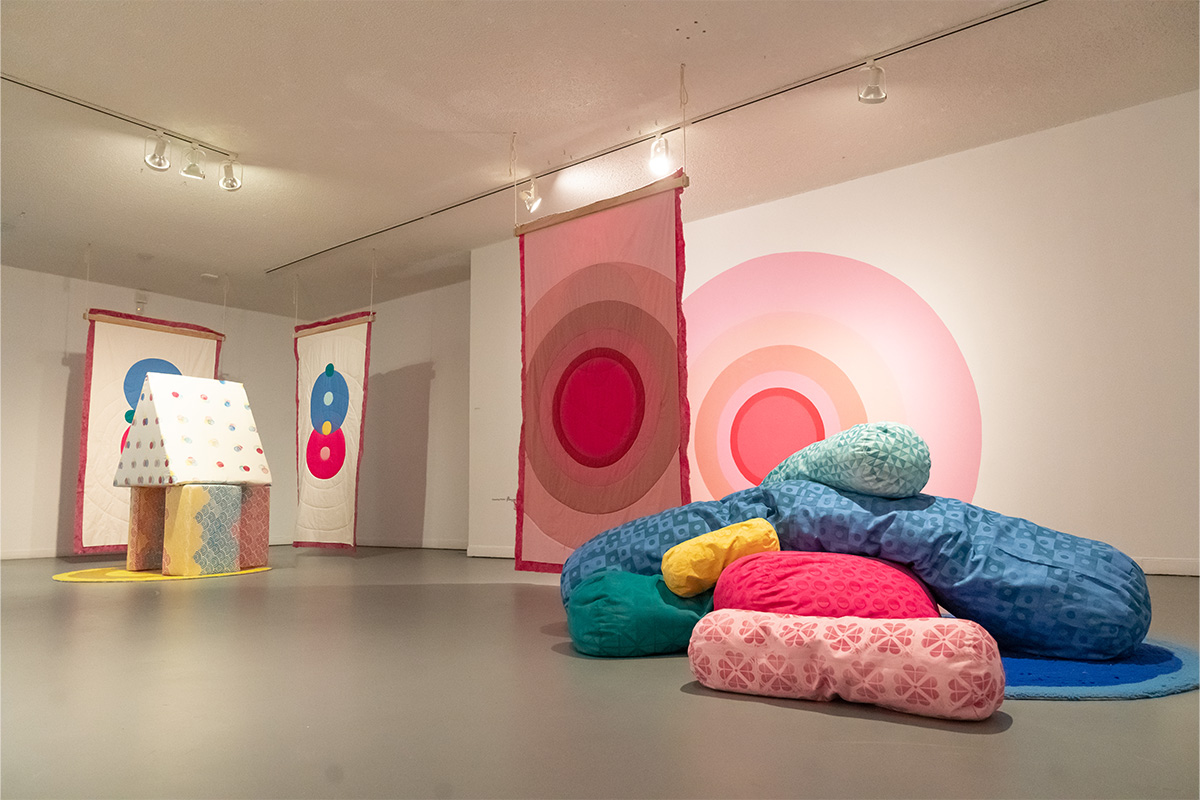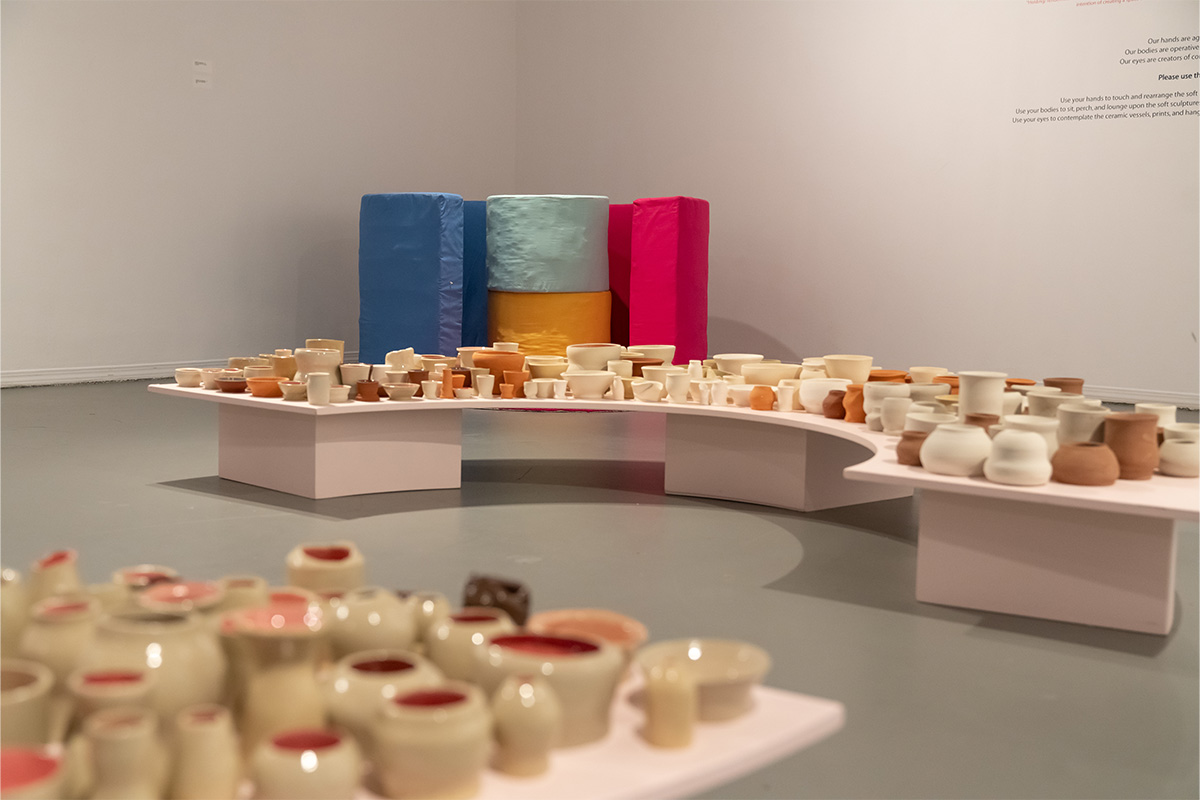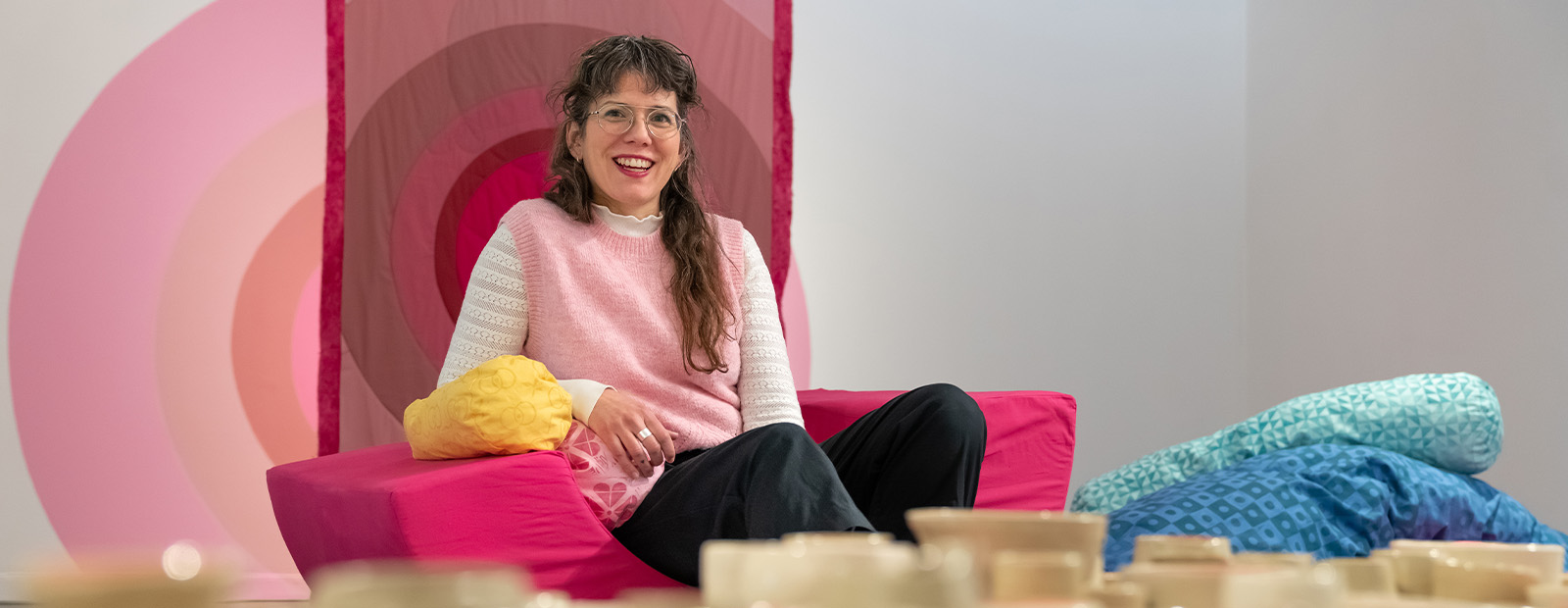Kerri-Lynn Reeves recently finished up her tenure as artist in residence at Harcourt House, an artist-run centre in downtown Edmonton. Her exhibition, Holding/Tenderness, was also part of her scholarly activity at MacEwan.
“I was honoured to be chosen as Harcourt House’s artist in residence. The position had a very clear path that aligns really well with scholarship. There was a period of research in the studio, and then there was dissemination of that research through an exhibition and its associated programming,” says the assistant professor of Studio Arts.
Reeves notes that research can look a lot different depending on the discipline, as well as the researcher themselves. She herself looked at other artwork and existing theories on psychology, social spaces and the role of caretakers in society.
“While I'm in the studio making things, I'm also listening to audiobooks, podcasts and interviews with psychologists, philosophers, healers, artists and activists. I’m accessing knowledge about the topics I am researching and then thinking through how that relates to my specific positionality as a mother, stepmother and professor, and expressing that through visual means,” she says.
For six weeks, Reeves’ work was displayed in Harcourt House, where she also led programming around the exhibition, including an artist talk where she explained the inspiration and meaning behind her work. She also led gallery tours and drawing workshops for members of the public, MacEwan community members – and even her daughter’s second-grade class. She also hosted studio visits and ceramic workshops for the class and some MacEwan students while she was in the research and creation phase of the exhibition.
In her artwork, Reeves explored a number of issues brought to light by the pandemic.
“There was a lack of physical comfort, support and social access that we needed while going through some pretty intense psychological and emotional experiences, either in extreme isolation or being isolated with really specific groups of people such as roommates or family. I was struck by how this made for different experiences for different people,” she says.
She tackled that isolation by making Holding/Tenderness interactive and encouraging attendees to use the pieces of the exhibition however they saw fit.
“The work was all very tactile; you could touch it. You could rest on it. It was all very soothing but playful. It was very repetitious and reminiscent of domestic spaces, so very comfortable. The idea was that people could feel safe, comfortable and comforted, and they could feel touched.”
Holding/Tenderness contained several soft pieces that attendees were encouraged to interact with in order to give a sense of comfort.
The reaction to the exhibition tells Reeves that she’s accomplished that goal. Not only was Holding/Tenderness well-attended, but the online and in-person feedback she’s received has been overwhelmingly positive. Some guests returned multiple times, exploring the exhibition in a variety of moods to see the different ways it affected their state of mind.
Reeves is taking that feedback and her research back to her classrooms. The exhibition was her first foray into ceramics – she created 366 vessels to represent the days of a leap year – and she’s since brought her ceramic wheel into the studio to introduce her students to the practice. But some of the elements she’s bringing to students are less tangible.
“I’m introducing the idea of letting the theoretical and philosophical come in a more intuitive way, and really honouring that empirical knowledge that we hold in our bodies through our experience of life,” she says.
Moreover, she hopes that her students – and the public – will see the value in artistic and creative scholarly activity.
“It is an expansion of knowledge, which is ultimately what scholarship is about, but it's also about bringing that knowledge to a broader audience. Knowledge can still live in academic peer-reviewed journals and at conferences, but it can also live in the community. It can be experienced in a way where everyone can take something from it,” says Reeves. “You can understand the theories and philosophers that have informed the work, you can understand the political aspect, or you could just really understand that it is pleasurable for you to be around and that you enjoy it. It's about connection, and how we make space for each other in the world.”
Reeves’ use of ceramics was an ambitious first attempt – she produced 366 vessels to represent the amount of days in a leap year.
